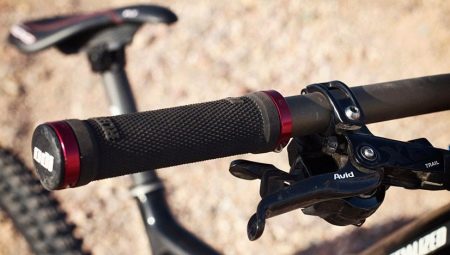Gripses for bicycles are called rubber, silicone or foam pads on the handle of the steering wheel. It is unlikely that anyone will argue that it is much more pleasant to ride a bike if, while moving, your palms hold the steering wheel firmly and its surface is pleasant to the touch.

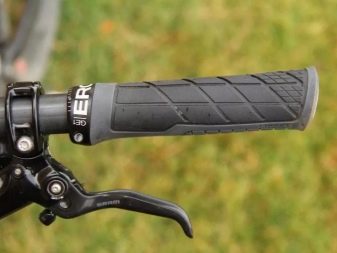
What is it and what are they for?
From a technical point of view, grips are bike handles that every athlete holds during the trip.
The use of influenza can significantly reduce the discomfort in the back during a long ride, and also contribute to unloading the hands.
The main purpose of influenza is to securely fix the hands on the steering wheel in a variety of weather and tourist conditions. During an active ride, your hands sweat, moisture often leads to significant discomfort, while high-quality bicycle handles have pronounced water-repellent characteristics and facilitate bike management. Gripses do not cool and do not overheat like metal, thanks to which the movement becomes more comfortable.
Another additional feature of bicycle handles is Decrease in amplitude of vibration during the trip.
As a rule, plugs are installed on grips, they do not allow them to slip, and in addition, they protect the steering wheel from dust, moisture and dirt during movement.
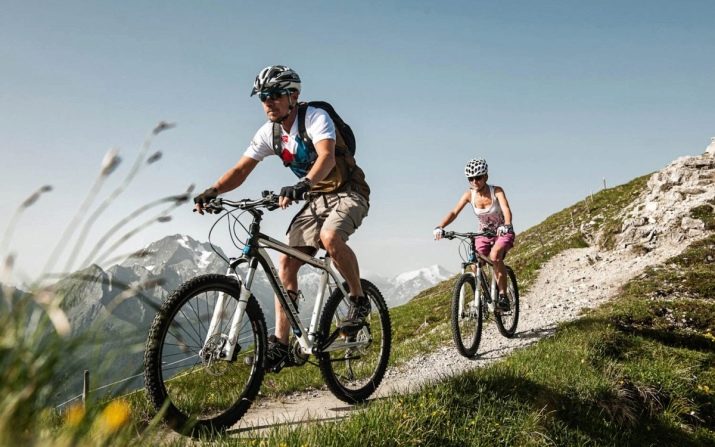
Kinds
Pads may vary in the materials used, manufacturing companies, as well as in the degree of rigidity, resistance to wear and size.
A universal solution is bicycle handles made made of medium hard rubber - such products do not rub your palms during the trip and at the same time provide the most durable grip. Such models are most in demand on the market, they are great for both professional athletes and beginner cyclists.
For active use it is worth looking at hard rubber products. They are distinguished by a longer period of operation and increased wear resistance. At the same time, they are quite inexpensive.
Such models have their drawbacks - during long trips, irritation of the skin of the hands occurs. In order to avoid such unpleasant consequences, it is recommended to use bicycle gloves with retaining rings on both sides.
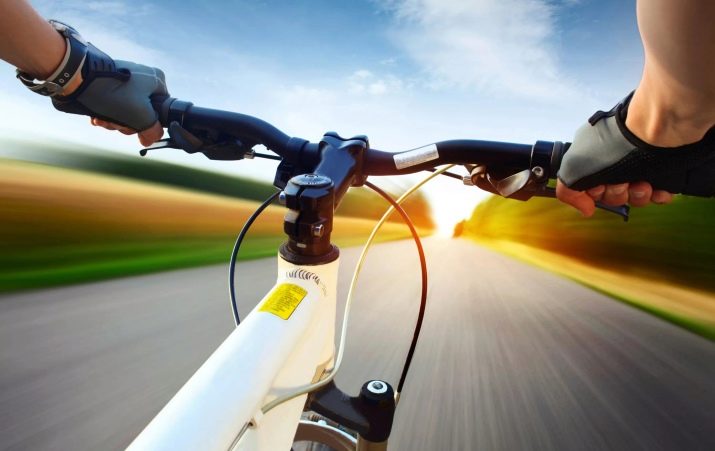
Keep in mind that with frequent use of the bicycle for 10-12 months, such grips wear out and become completely unusable. If you do not replace them in time, the chamfer on the hexagon can curl up, and this often leads to the need to cut the ring.
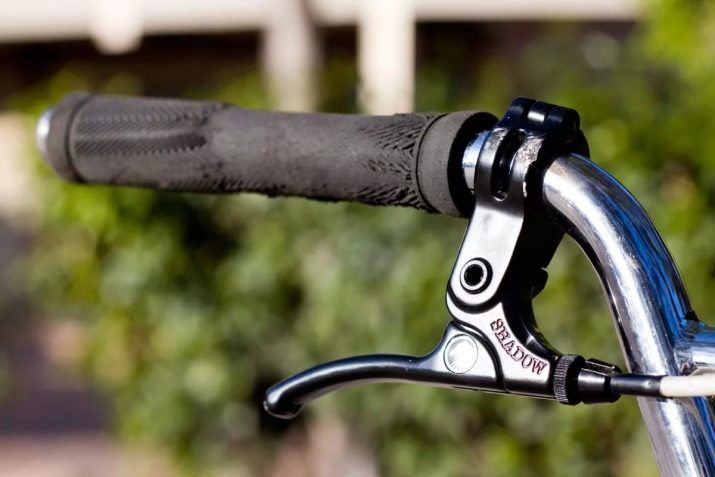
Stand alone Ergonomic grips. These handles are fully consistent with the physiological shape of the palm, they have recesses for the fingers, and in the places of contact with the hands there are bulges. With careful use, such products last quite a long time.
Very popular with cycling enthusiasts soft models for cycling. They are chosen by professionals in order to provide the most durable grip on the steering wheel. However, they can be operated no more than 3-5 months.
Anatomical grips are chosen for a certain size of the hand, arm and fingers, they are more effective, since they are located at the right angle, the area on the back of the hand is filled, so the extra bends of the fingers are completely eliminated.

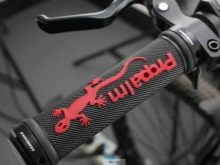
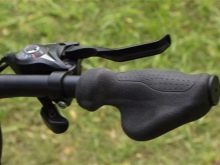
Materials and Design
To date, on sale you can find grips made of a variety of materials and in various design options. Each model has its own advantages and disadvantages that you need to know about before making a purchasing decision.
The classic version is rubber products.
Pros:
- low cost;
- consistently wide range;
- light weight;
- can be made for delivery to stock bikes.
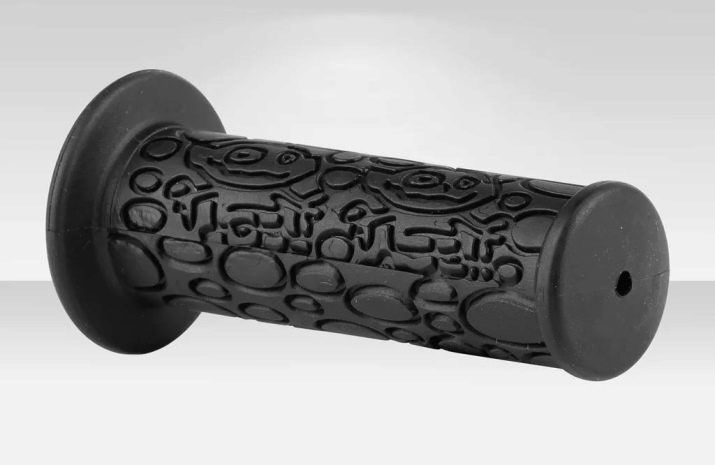
Minuses:
- poor adhesion in the rain or any other interaction with water;
- if we talk about bicycle linings with a diameter of 32 mm, then their depreciation to the vast majority of users seems weak;
- from snow and rain they scroll.
Rubber pads are recognized as the best working option, however, for professional active use, they will not be enough.
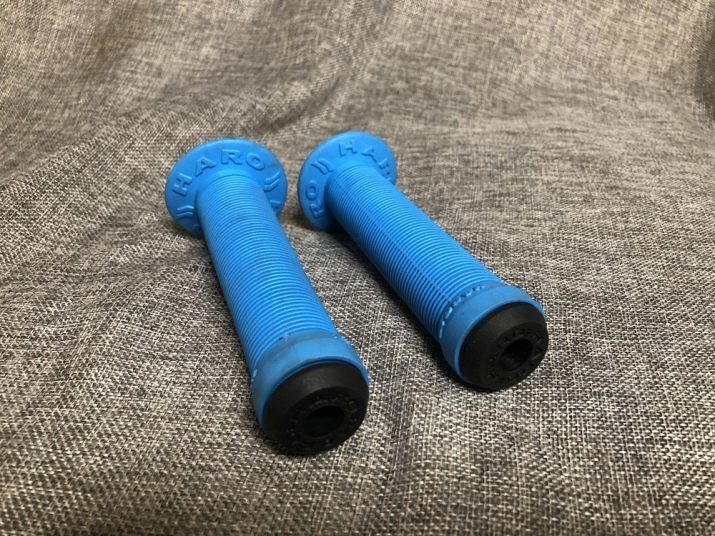
Foam rubber flu Soft and comfortable to use.
Pros:
- light weight;
- good depreciation on uneven soils;
- wide selection in retail outlets;
- reliable grip in high humidity.
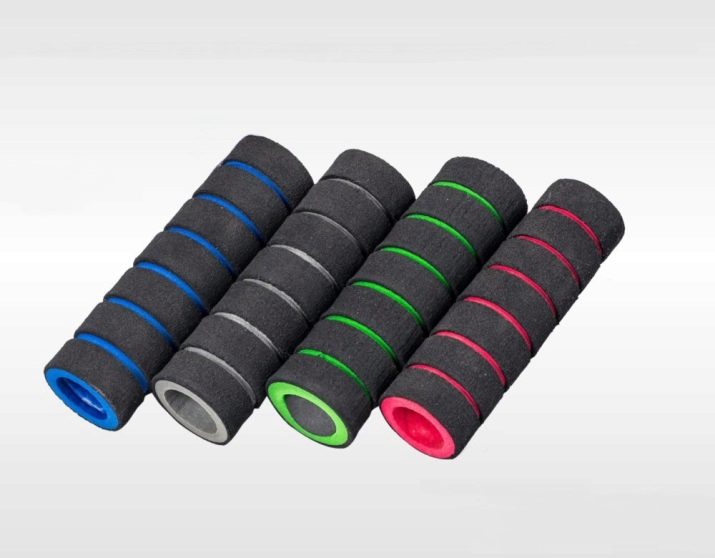
Minuses:
- products are not suitable for cushioning in severe collisions, as the handles are too soft;
- less resistant to wear and mechanical damage;
- tend to scroll.
Most often they have leather coverings. This variant of grips can be called standard for cross-country.
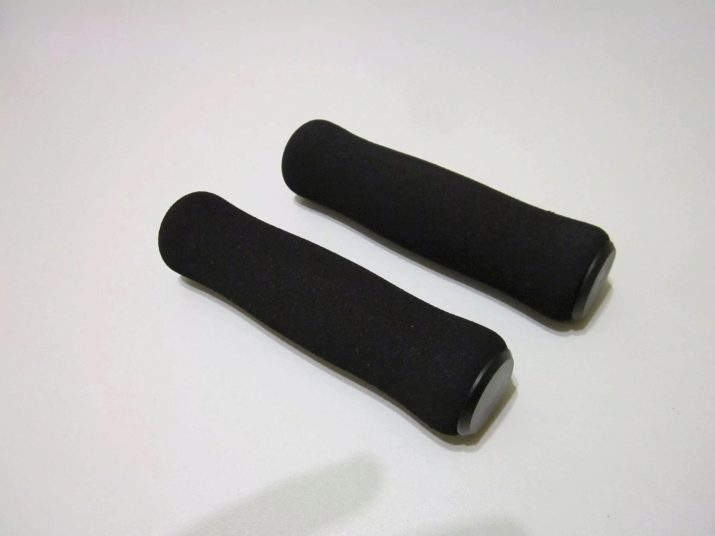
Silicone flu are of high quality.
Pros:
- high depreciation for hard blows and when driving on rough terrain;
- perfect stability;
- lack of scrolling and slipping;
- reliable grip when interacting with water;
- light weight.
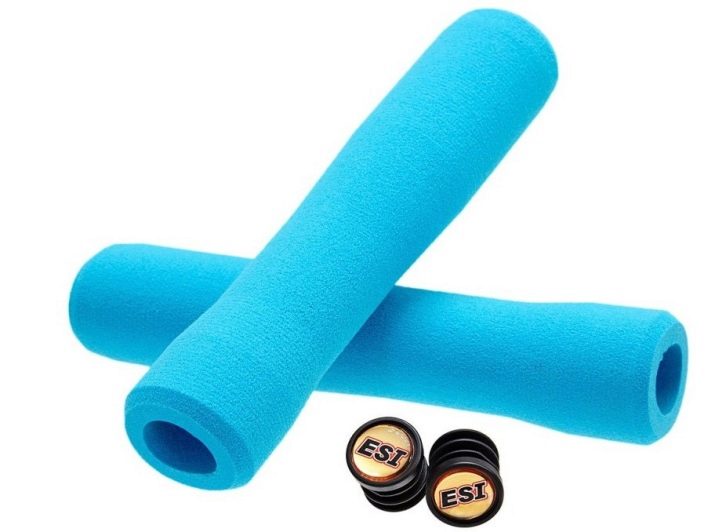
Minuses:
- small selection;
- fairly high cost;
- low resistance to mechanical damage.
Silicone flu better than others mounted on the steering wheel, they are distinguished by high quality and practicality. For protection, it is recommended to use plugs that press the handles on top and on the sides.

Brands
- Grips Acor ASG-2303 made of Kraton material, their width corresponds to 13 cm. The pads have a physiological structure, due to which even a long trip on a bike remains comfortable.
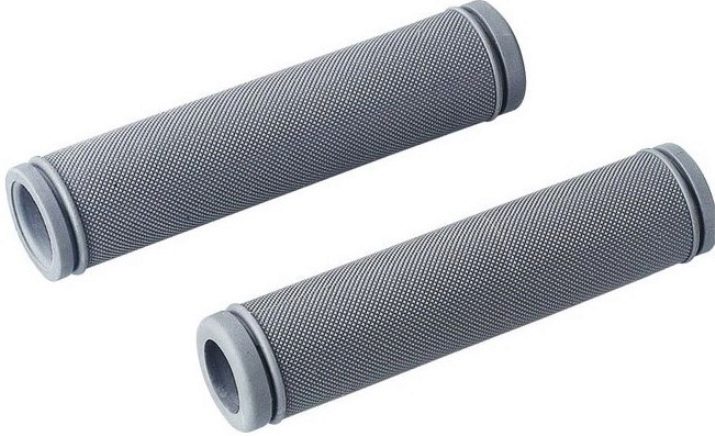
- Bontrager Race Lite Plus - here Kraton is also used as a base material, but only on a much more solid basis. These grips are persistent, do not scroll and do not slip. Product Width — 13 cm

- ODI X-Treme. These bicycle handles are equipped with black aluminum inlays. Typical width - 13 cm, approximate weight - 90 grams. The kit includes plastic plugs.
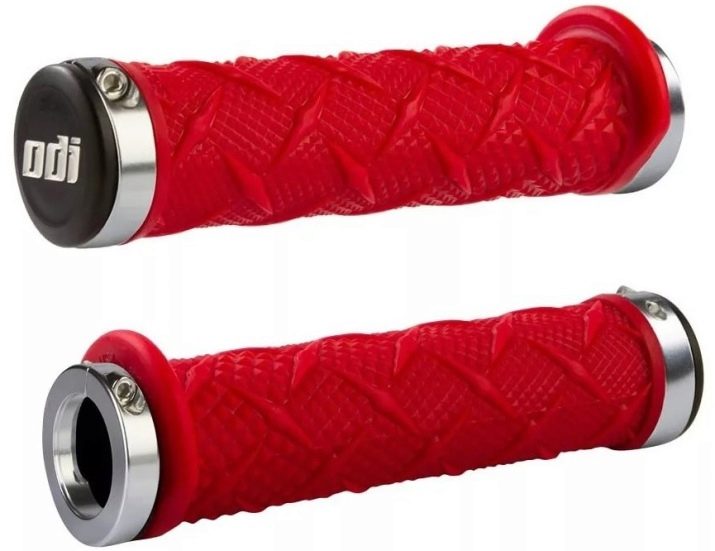
- Pedro's Dice Vice. The diameter of these handles is 3 cm, and the width is 12 cm, various options for clips, blocks and plugs are provided.
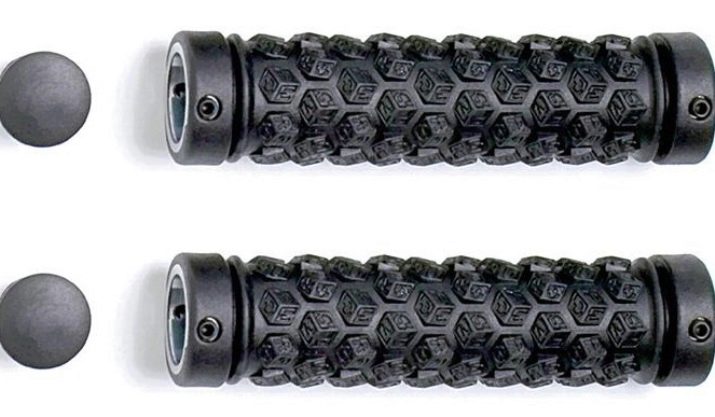
- PRO Ergonomic. The width of the flu of this brand is standard - 13 cm, the handles are physiological, created taking into account the anatomy of the human palm. They feature a double compound, complemented by locks on the steering wheel itself. Plugs included. Total weight - 160 g. This is one of the most expensive models, but experienced cyclists assure that the price is more than offset by quality, comfort of movement and a long period of operation.
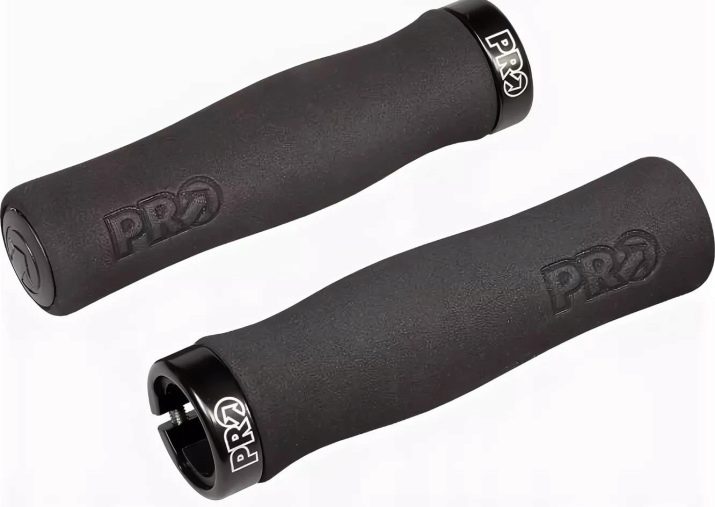
- Prologo Feather Foam. The width of these models is 13 cm. High density expanded polystyrene foam is used as the basic raw material for the production. Such pens are quite light, in a pair their weight is only 11 grams. The color is black.

How to choose?
In order to choose the optimal model of grips, first of all you need to figure out what pens that are available in your bike at the moment are not suitable for you.
If you consider their technical condition unsatisfactory, but you have never experienced any discomfort during operation, you should get the same grips that are on your bike now, only of higher quality.
If you experience pain during your bike ride on your wrists, you can think about buying softer or physiological models.


Very popular anatomical flu. These models are optimal for tourists and created specifically for them. However, it should be noted right away that the installation of such handles greatly improves ride comfort, but at the same time you cannot grab the steering wheel quite reliably. Such models are not suitable for mounting on mountain and professional bikes.
On sale you can always find anatomical grips with horns. These handles are solid, made of thick rubber or plastic - in this case they can be used in several positions. Such models are stylish, comfortable, although models with metal horns are considered more practical and durable. It is unlikely that you will be able to rest your whole body on plastic supports, without fear for their reliability, many inexperienced cyclists often break them in the first kilometers.
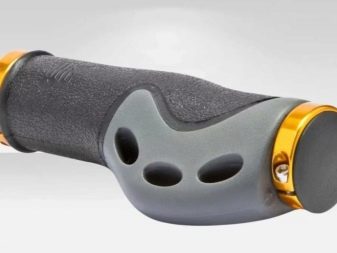

The budget option will be mild flu, however they will have to be changed much more often. In addition, foam rubber absorbs water - if the hard linings remain dense even during a trip in the rain, then the foam linings will become soft and unpleasant to the touch.
Which model will become more convenient for you is up to you to decide. From the point of view of functionality, they solve the same problem, so you need to purchase those products that you prefer.
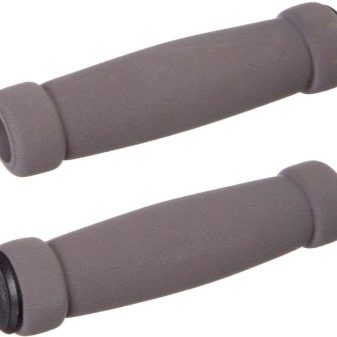
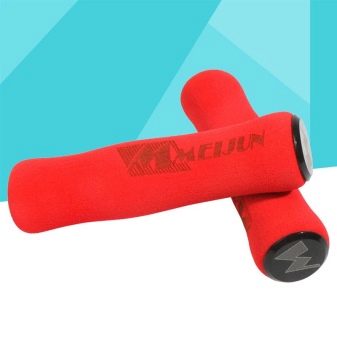
Recommendations for installation and removal
If you have decided which bicycle handles will be the most comfortable and convenient for you, you should consider how to install them on the bicycle.
There are several options.
- Gripses are moistened with warm water and put on the steering wheel. Please note that they will dry for about a day, if you do not wait for complete drying, the handles will simply fly off during operation.
- Gripses abundantly wet with alcohol and put on. Instead of alcohol, you can use the most common deodorant spray. Such a handle dries much faster.
If you bought hard grips, first you need to boil the water and put handles in it for a couple of minutes, then take it out and quickly put it on the steering wheel. Such products are attached literally “tightly”.
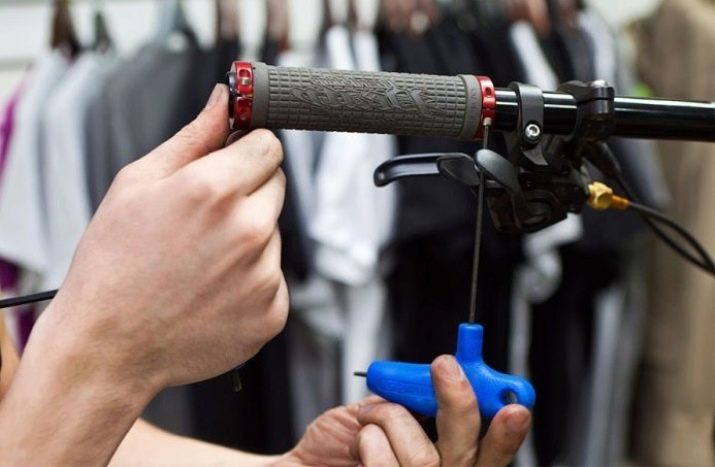
It is not easy to remove the handles; usually one of the methods is used.
- Using soapy water and a syringe. In this case, the flu should be pierced with a needle, a weak soapy solution is injected inside, as a result, the handle quickly slides off. If there is no syringe at hand, then the trim can be carefully bent with a thin screwdriver and also pour liquid under it.
- The second method involves unscrewing the hexagon located on the cuff. When the mechanism is loosened, the flu itself is weakened, so it is easily removed. This method is often used by sellers in sports stores, it requires the application of certain physical efforts, it is best to perform all the necessary manipulations together with an assistant who will support the steering wheel from the opposite side.
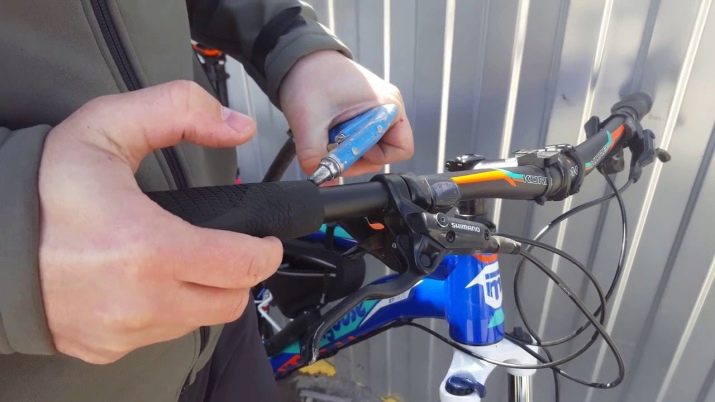
See the Grips Mountain Bike influenza video review below.
